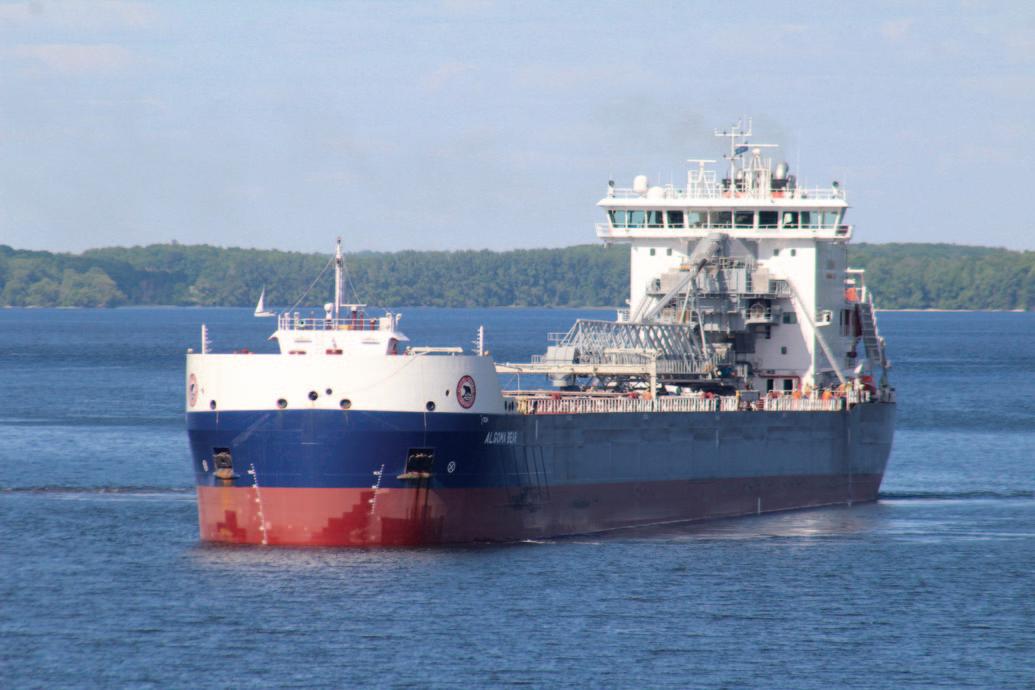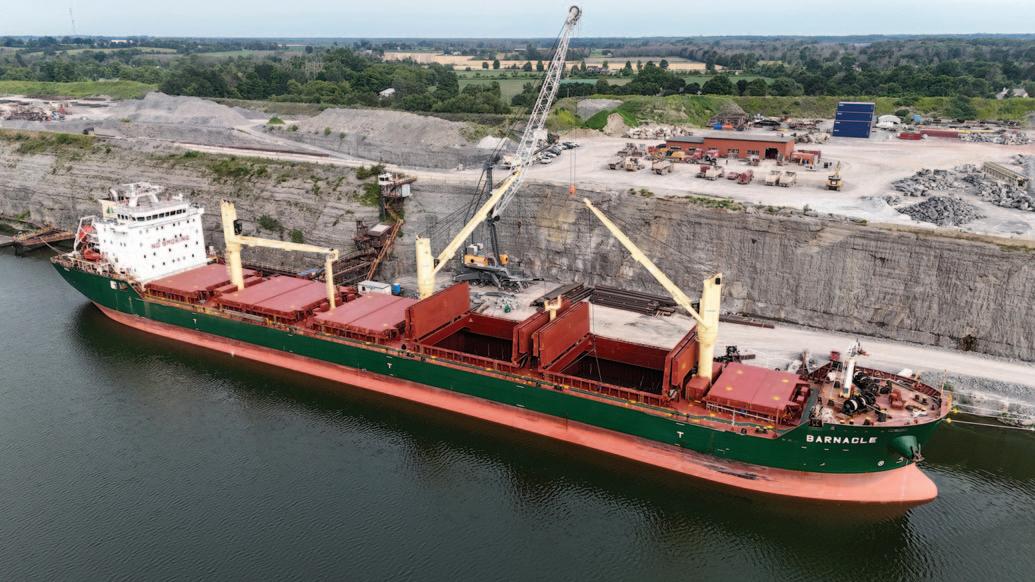
2 minute read
Picton Terminals reports on vessel calls and recycling projects
Picton Terminals by Doornekamp provides logistics solutions and diverse port services which provide better, more efficient shipping throughout the St. Lawrence Seaway & Great Lakes region.
Picton Terminals offers stevedoring and unique storage options, innovative solutions and proximity to large markets.
History
The Picton port was brought back to life when it was purchased by Doornekamp in 2015. The port can trace its roots back to 1948, when Bethlehem Steel Mills of New York discovered a magnetite ore body in Marmora, Ontario, in 1948 via a government aeromagnetic survey.
The mine site was developed between 1951 and 1953 which included the stripping of 120 feet of limestone overburden. The first shipment of iron ore pellets commenced in 1955.
The iron ore containing magnetite was crushed and ground, and magnetically separated to produce 65% iron concentrate and roasted at 2,400F. Each day, one ore train of 30–35 cars delivered iron ore pellets to the Picton port for loading into 25,000dwt ore ships destined for the Bethlehem Steel Company plant in Lackawanna NY via the Welland Canal. Annual plant production was 520,000 metric tonnes.
The Marmora mine was expected to operate for over 50 years. However, in the late 1970s, iron production significantly decreased due to a sluggish economy, runaway inflation and a decrease in world demand for steel. In March 1978, the
Keeping Busy
Picton Terminals by Doornekamp’s tug crews have been busy with some special projects, and the terminal anticipates further bulk shipments in autumn.
Furthermore, H. R. Doornekamp


Construction Ltd. is celebrating its 45th year anniversary in 2024.
Picton Terminals itself is in its tenth year of marine shipping operations, so 2024 is filled with milestones for the whole team.
In terms of vessel calls, the terminal has been busy:
In April this year, Picton Terminals v loaded the vessel Whitefish Bay with sugar via its modernized 1950s-era shiploader.
Later, in May, it welcomed the new v Polsteam Dabie on her maiden voyage into the Great Lakes in May 2024 (steel). Officials at Picton Terminals greatly appreciated that the Captain provided a tour of his vessel.
Picton Terminals assisted the new v Algoma Bear (May) and Baie Comeau (June) with equipment.
Picton Terminals welcomed the v Barnacle , on Captain Oleksandr Myedvyedyev’s maiden voyage into the Great Lakes, in July 2024 (steel), where again it was greatly appreciated that the Captain provided a tour of his vessel.
The Amy Lynn D tugboat crew v successfully completed their first voyage pushing the Heidelberg

Materials barge Metis, loaded with cement across Lake Ontario and arriving in Oswego, NY USA.
As part of its dedication to environmentally friendly operations, Picton Terminals’ crew recycled train trestle steel (on its site) to build bin walls on its barge — a great example of its dedication to recycling rather than replacing. Over winter, the Doornekamp Construction Team designed and built a pin wall on the Dowden Spirit barge. Vertical posts are fixed to the barge deck, and these posts hold the wall sections in place. This pin wall design allows wall sections to be removable, thus affording multiple barge access points, and bin wall layouts. The bin walls serve two main purposes including : better containment of aggregates v (more aggregate per trip means a more efficient trip); and cleaner/safer access to hatches and v bits for the tug crews. The pin wall barge project was constructed using 50 metric tonnes of recycled steel beams from the old Bethlehem Steel train trestle bridge that remains on the Picton Terminals’ site.













